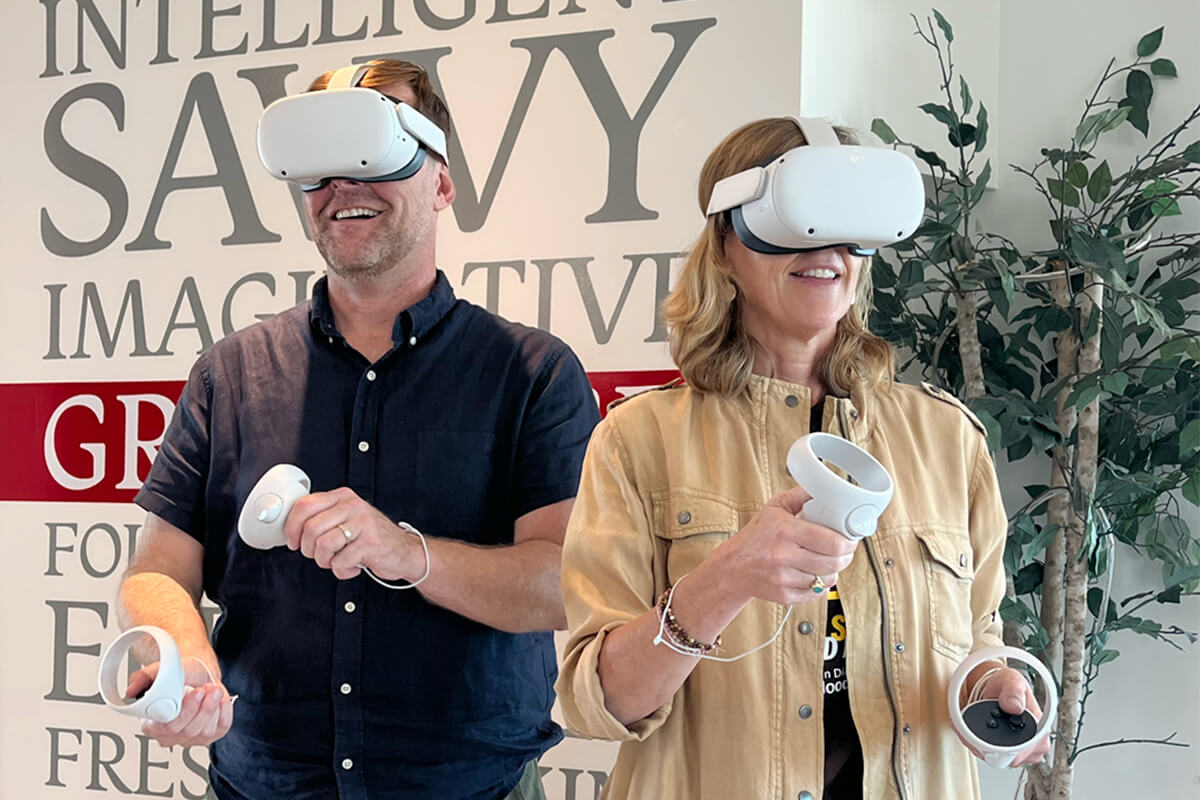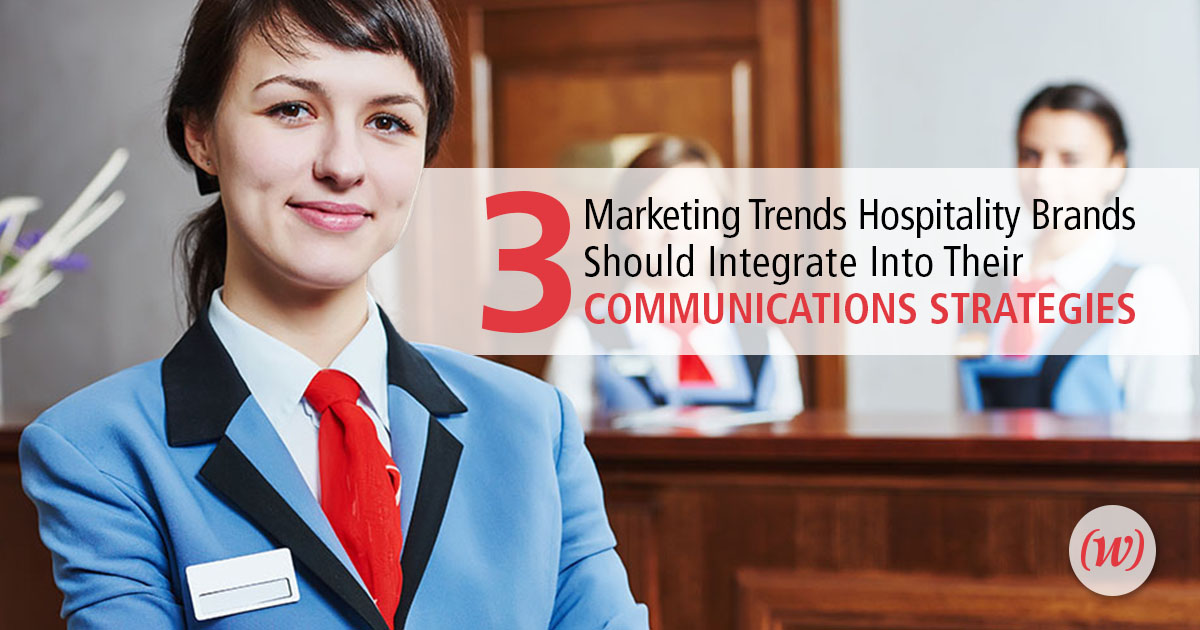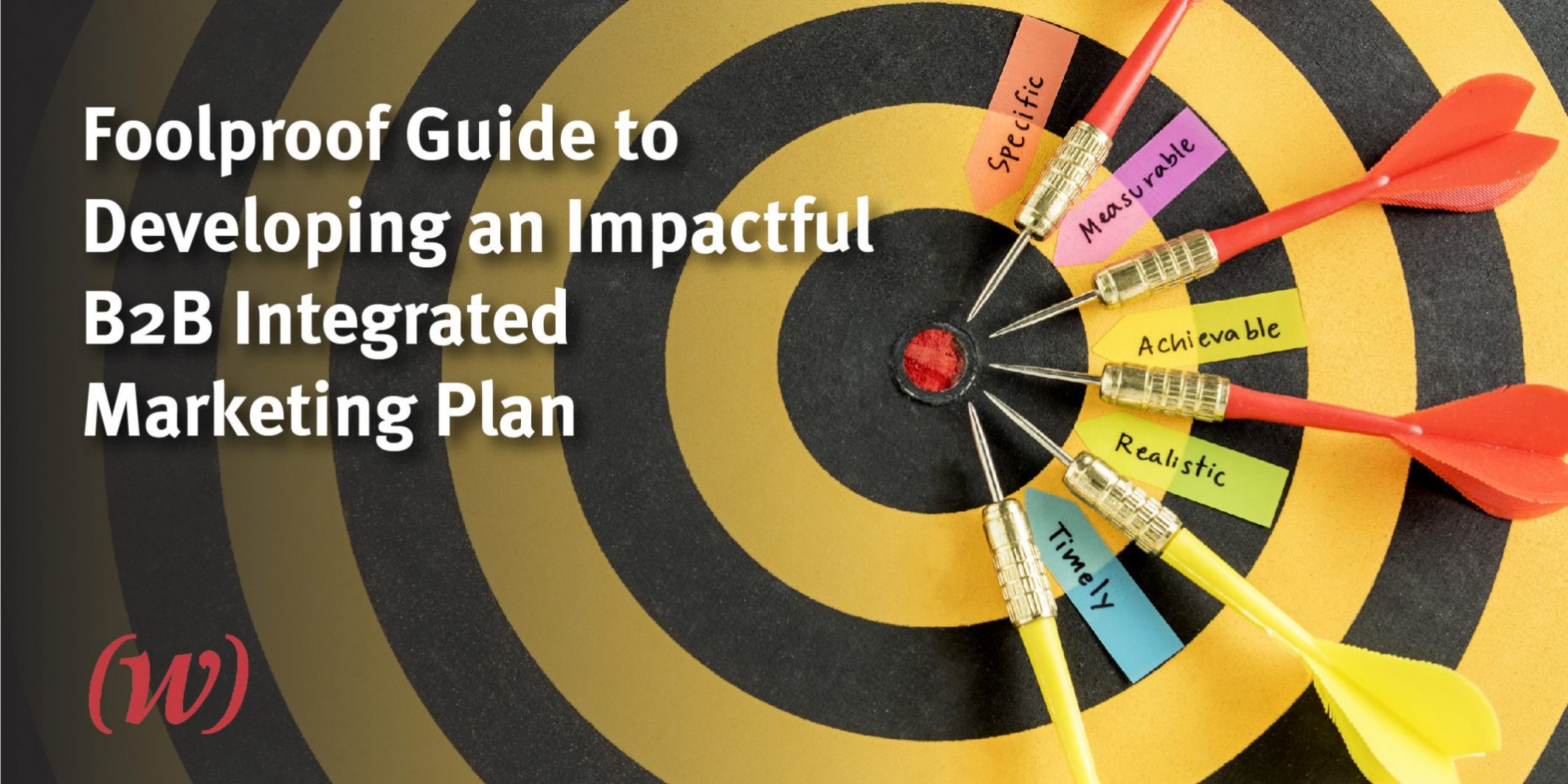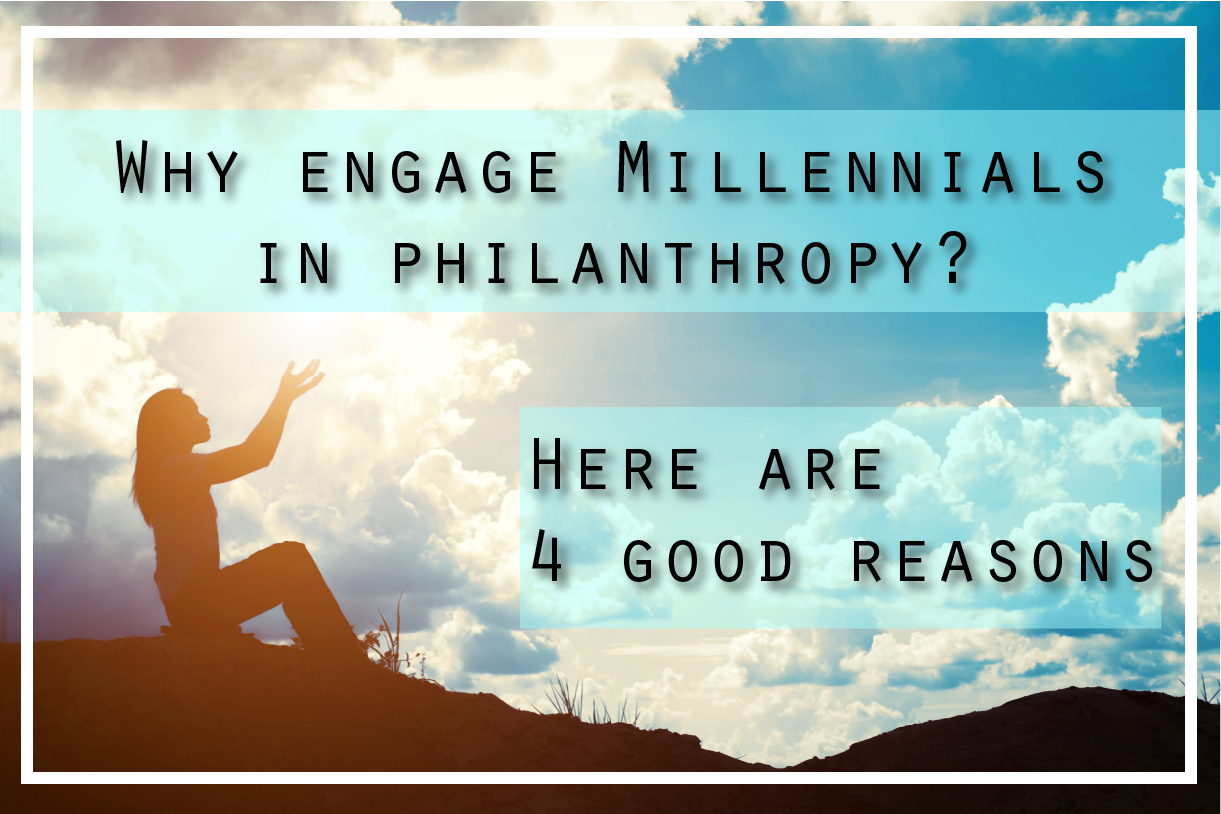While data-driven insights undeniably play a crucial role in marketing and communications, there are times when being led by data without considering its context and potential biases can lead to flawed decision-making. We explore when to listen to your gut over the numbers and how embracing your instincts can fuel innovation and success.
Continue readingRediscover the Lost Art of Conversation
Four PR Trends for 2023
Three Essential Marketing Tactics for Hospitality Brands
1. Integrate the influencers
In this era of diminishing trust, the public craves authenticity. This is reflected in the massive growth of a hospitality marketing tactic that recently established itself and is expected to experience five times more growth by 2021– influencer marketing. Rather than sticking to the basic ad placement that’s blatantly meant to sell, influencer marketing creates a sense of sincerity. The influencer isn’t seen as some big corporation looking to make money, but rather as an admired friend that’s looking to inform their followers about a great product or destination that they think they’ll enjoy.

Influencers are now widely used in campaigns, but there are a few important steps you need to take prior to introducing an influencer into your hospitality brand’s campaign.
- Assess the campaign goals as well as the overall goal of the brand
- Analyze the influencer’s audience
- Evaluate the type of content the influencer posts to see if it will actually aid in achieving your brand’s goals (i.e. geotagging, hashtags, tagging, shots of the hotel/destination)
- Most importantly, track the levels of engagement between the influencer and followers
After assessing your goals and properly vetting the influencer, communicate your goals to the influencer. Don’t simply offer money or free product to the influencer in exchange for specific content. Instead, collaborate with the influencer to ensure they understand the mission of your brand and empower them to create the content that will resonate with their followers the best. This process results in content that feels more genuine and is more appropriate for the target audience.
2. Freshen up your storytelling
With the plethora of channels used by consumers to share and exchange information, it’s getting harder and harder for a hospitality brand’s content to stand out. Yes, being an outstanding writer is important, but what communicators now have to consider is how to best present their message to the audience in a fun, creative and visual way. Luckily for us, there’s a variety of exciting new storytelling tools at our disposal. From virtual reality to drones to infographics to 360 ° cameras, take advantage of these tools to create unique stories that immerse the viewer and hint at the kind of experience they will have if they choose your hospitality brand.

The point of using these technologies is to help spark a feeling about your brand through content. The ultimate at doing this is Disney. Instead of focusing on specifications and features – X number of beds, X amenities, $X per night, etc. – you should be focusing on the experience they deliver and the emotions surrounding it.
Sidenote, if you’re interested in hearing more about how to use 360° cameras in your campaign, read this post by WOC President and Founder Julie Wright.
3. Listen and engage
Two-way communication has never been more important than it is today. Users are not only consuming content, but they’re also creating it. Not only does user-generated content remove some of the hassle of creating original content, but it also creates a feeling of authenticity. Plus, an unpaid consumer sharing their experience with your brand is third party validation just like great media coverage.

Take advantage of this user-generated content and find ways to include it in your communications strategies. To find this content, deploy social listening campaigns. Through social listening, hospitality brands are able to spot content where they’re featured and identify what’s being said about them. An excellent social listening tool is Hootsuite, which enables you to link and create dashboards for multiple social platforms that show streams of mentions, comments or shares so you can quickly and easily share or respond.
Natalia Xibille —Communications Coordinator
B2B Integrated Marketing: 5 Step Foolproof Guide
By Chance Shay —Director of B2B and Infrastructure Development
Twitter: @ChanceShay
Marketing communications in silos doesn’t work. If your PR efforts aren’t aligned with your content marketing and your digital marketing is on a different frequency, you’re setting yourself up for a not-so-fun conversation with your CMO. In a time when the average attention span is eight seconds and where humans are producing the same amount of data in two days as was generated in all of human existence leading up to 2003, it’s easy to see why each individual marcomm channel is less effective in isolation.
But with a challenge comes an opportunity. By syncing up all of their efforts, marketers are able to make the overall impact of marcomm efforts far greater than their individual sums. This is integrated marketing.
Integrated marketing communications (IMC) is the only marketing strategy that is effective in 2017. It optimizes the communication of a consistent message from a brand to stakeholders by integrating communication channels and harnessing the benefits of each channel, which amplifies their impact beyond what they could achieve individually.
The entertainment industry has done this for years. At Comic Con, you’ll see the same message about a new movie being promoted on advertisements (paid), conveyed during interviews and editorial stories (earned), used on social media (shared) and said during the panel discussion with the movie’s stars (owned).
B2B brands have to take this same approach, but with a few key changes. To help, we’ve put together a foolproof, five-step guide to help any B2B brand nail its integrated marketing plan.
1) Define the business objective
An obvious first step, but it’s essential that the integrated marketing flow from the brand’s overall business objective. Whether stealing market share or creating a new category, the brand’s big picture goal will drive everything from strategy to KPIs and execution.
2) Know thy audience
More than just understanding the type of business that’s a good fit for your service or product (i.e. a SMB in cleantech with $10-25 million in revenue), a brand must have a rich, granular picture of who is most likely to purchase their product and why. The “why” is important for establishing and framing the unique selling proposition for any good or service, but the “who” is the most important for structuring your IMC plan. Is your customer likely to be innovative or more risk adverse? What’s important to your customer in how they operate their business and the culture they create internally? Is a top tier trade outlet or a general news daily with huge name cachet more influential to them? For example, if the decision makers for your prospective customers are millennials, you’ll want to know they are 247% more likely to be influenced by blogs or social networking sites than older generations. That impacts strategy in a meaningful way, so get as holistic a view of your audience(s) as possible.
3) Set SMART communications goals that support the business objective
Like with most sound strategies, for IMC planning you must start with the end goal and work backward to develop a plan for how to get there. What is it – in a specific, measurable, attainable, relevant, time dimensioned way – that you’re wanting the plan to achieve. Is it to drive a 20 percent increase in free trial sign-ups? Is it to grow website traffic for key landing pages by 30 percent? At the end of the day, for B2B brands it all boils down to driving revenue. The marcomm component is meant to move new business prospects down the marketing funnel from being brand aware to being brand loyal. Setting SMART goals and KPIs for your integrated efforts will help ensure you’re on the right track.
4) Select your weapons of choice
Not all platforms and mediums are right for every brand. In some industries, trade shows have a higher demonstrated ROI than weekly vlogs on YouTube. For others, the best way to reach decision makers is on LinkedIn and not through content marketing. The first question to ask when determining where to focus marcomm resources is, “Where are my customers spending their time and how are they influenced?” Almost as important is asking yourself, “What channels allow me to showcase my brand’s strengths?” If your brand offers something innovative but a bit dense and niche, then Instagram as a platform would be challenging to generate traction. Instead, speaking opportunities at conferences where you (or your CMO) have more time to explain nuances would be more impactful.
Remember, you have all the PESO (paid, earned, shared, and owned) channels at your disposal.
For Paid, consider if your audience is actively looking for your solution or if you have to be proactive in helping them realize they need your product or service. When thinking of earned coverage, would contributed by-lined articles support your communications goals or would an analyst evaluation be better? On Shared channels, selecting the platform must flow from determining the strategy for how social media will help reach the communications goal – whether by creating a community, showcasing thought leadership, engaging in the digital conversations prospective customers are having or otherwise.
Part of how IMC for B2B brands is different than for consumer brands is how owned content is leveraged. Owned content should be valuable to your customers and your customers’ customers. Your customers want to know you “get them,” but they also appreciate content that reinforces their value. The ROI is clear when you consider that B2B companies that blogged 11+ times per month had almost 3X more traffic than those blogging 0-1 times per month. If your content is targeted, that increase in traffic means an increase in leads. Of course, that’s just one data set, but wouldn’t you like 300% of the traffic you’re getting now?
5) Use an umbrella to make it rain
Traditionally, an umbrella blocks the rain from hitting you. But for B2B brands, you need an umbrella that covers all of your IMC to bring in new business and make it rain. The umbrella, of course, is an overarching theme or idea that ties all of your marcomm efforts together. It could be owning a position or using some fun, quirky euphemism to convey the unique selling proposition of your product or reinforce a brand identity. This doesn’t mean that all efforts across all platforms need to look exactly the same. In fact, solid marcomm utilizes the most impactful features of each platform, but the umbrella campaign theme or concept keeps everything cohesive and consistent. When deciding an umbrella theme, think big picture about how it would translate across each of your decided platforms and whether it syncs with your strategy for how you intend to utilize each channel.
With audiences diversifying and a fragmented media landscape, there are no silver bullets for achieving communications goals. To be effective in moving the bottom line needle, communications – from advertising to PR, from social media to content marketing – need to be intentional in both strategy and timing. Check out a few ideas here, then follow these steps and you’ll be on your way to crushing the IMC plan and impressing your CMO.
Why engage Millennials in philanthropy? Here are 4 good reasons
By Kat Beaulieu—HR Communications Strategist
Twitter: @stubborngoat.com
There is a too common perception among donor-reliant nonprofits that targeting Millennials with fundraising efforts is a waste of time and resources. If the big donations tend to come from the bequests and corporations associated with older audiences, why put effort into trying to reach Millennials?
Engaging Millennials to support your nonprofit organization can have far-reaching benefits that positively impact your bottom line.
Here are four crucial reasons to reach out to them.
-
Millennials are now the nation’s largest living generation.
That alone should be enough incentive. What business plan ignores the largest living demographic? A short-sighted one, that’s what. Through their sheer numbers, Millennials can make social media posts go viral, providing a tremendous awareness boost to charitable giving campaigns. Just look at the reach of initiatives like #GivingTuesday. And as a direct result of the ALS Ice Bucket Challenge, which took social media by storm, scientists discovered a new ALS gene.
-
Because there are so many of them, Millennials are in tough competition for jobs.
Those who want to get ahead understand the value of having volunteer experiences on their resumes. Talented and eager Millennials will work for your organization for free on labor intensive but meaningful activities like events, emails, and social media. This can save your organization time and money. Pair your Millennial volunteer with an experienced individual who will share all the intricacies and nuances of the role. Imagine the awesome results when your paid Volunteer Coordinator explains the complexity of volunteer scheduling and the Millennial researches and implements the latest scheduling software, shaving 10-hours off the Coordinator’s weekly workload.
your organization for free on labor intensive but meaningful activities like events, emails, and social media. This can save your organization time and money. Pair your Millennial volunteer with an experienced individual who will share all the intricacies and nuances of the role. Imagine the awesome results when your paid Volunteer Coordinator explains the complexity of volunteer scheduling and the Millennial researches and implements the latest scheduling software, shaving 10-hours off the Coordinator’s weekly workload.
-
Millennials want to be part of your boards–they just don’t know they’re invited.
Board appointments are another powerful reference Millennials would love to have on their resumes. Imagine the impact of replacing some of your retiree board members with Millennials. Instead of having people who have nothing to prove, you’d have people who have everything to prove. Again, you need to set them up for success. They’re new at this, so setting clear goals and expectations is key, and assigning a mentor is even better. But the time and cost-saving results of having an enthusiastic Millennial heading up or assisting on a board project can be remarkable.
-
For Millennials, there is a connection between volunteering and donation amounts.
In fact, by a margin of more than two-to-one, Millennials who volunteer for nonprofits are more likely to make donations. Also, Millennials who form long-term volunteer relationships tend to give larger gifts and encourage friends and family to give and volunteer as well[1]. This means there’s an exponential effect to  engaging Millennials in volunteer work. Not only will the volunteer work likely lead to donations, but the Millennials will pull their friends and family in too.
engaging Millennials in volunteer work. Not only will the volunteer work likely lead to donations, but the Millennials will pull their friends and family in too.
These are four good reasons why your nonprofit should be engaging Millennials, but perhaps the most powerful one is that you’ll be benefitting now while building a relationship with future bequestors and corporate decision-makers.
Now that you know the ‘why’ allow us to help you with the ‘how’ to attract and engage Millennials to your nonprofit organization. Get in touch and let’s get the conversation started!
[1] 2012 Millennial Impact Report, by Achieve.









 Grant Wright
Grant Wright





 Corie Fiebiger
Corie Fiebiger
 Shae Geary
Shae Geary Roman Lukjanenko
Roman Lukjanenko Phelan Riessen
Phelan Riessen Katrina Early
Katrina Early Hamish Marshall
Hamish Marshall